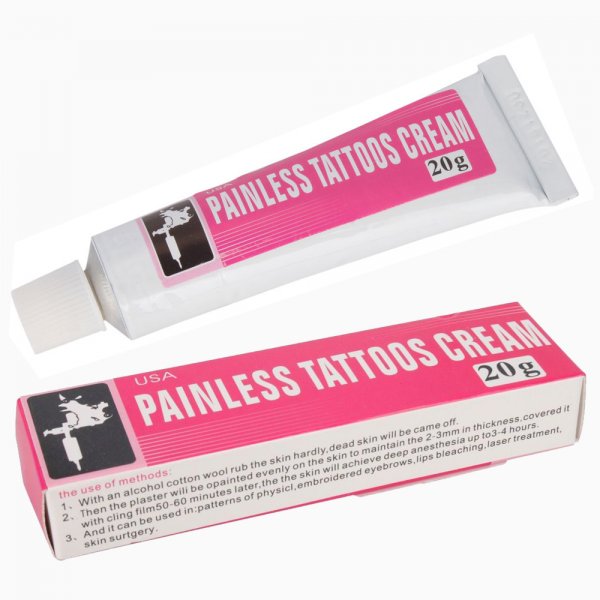


If you are pregnant or breastfeeding, think you may be pregnant or are planning to have a baby, ask your doctor or pharmacist for advice before using this medicine. sulphonamides, see also Section 2 Other medicines and EMLA Cream).ĮMLA Cream should not be used in preterm newborn infants. in the vagina) of children (below 12 years of age) owing to insufficient data on the absorption of active substances.ĮMLA Cream should not be used in children younger than 12 months of age who are being treated at the same time with other medicines that affect blood pigment levels 'methaemoglobinaemia' (e.g.
#Numbing cream for tattoos cvs skin#
The effectiveness of EMLA Cream when drawing blood from the heel of newborn infants or providing adequate analgesia for circumcision could not be confirmed in clinical studies.ĮMLA Cream should not be applied to the genital skin (e.g. In infants/newborn infants younger than 3 months a transient, clinically not relevant increase in blood pigment levels 'methaemoglobinaemia' is commonly observed up to 12 hours after EMLA Cream is put on. This interaction is of no clinical relevance in short-term treatment with EMLA Cream in recommended. Cimetidine or beta-blockers, which may cause an increase in the blood levels of lidocaine.Medicines to treat an uneven heartbeat, such as amiodarone.Medicines used to treat epilepsy, called phenytoin and phenobarbital.Medicines used to treat infections, called 'sulphonamides' and nitrofurantoin.In particular, tell your doctor or pharmacist if you or your child have recently used or been given any of the following medicines: In that case the doctor will monitor your heart function.ĭue to the potentially enhanced absorption on the newly shaven skin, it is important to follow the recommended dosage, skin area and application time. if you take particular products for heart rhythm disorders (class III antiarrhythmics, such as amiodarone).Application times of longer than 30 minutes may result in an increased incidence of local skin reaction (see also section 4 'Possible side effects'). if you or your child have an itchy skin condition called 'atopic dermatitis', a shorter application time may be sufficient.If any of these problems are present, check with your doctor, pharmacist or nurse before using the cream. Do not use EMLA Cream on areas with skin rash, cuts, grazes or other open wounds, with the exception of a leg ulcer.if you or your child have a problem with blood pigment levels called 'methaemoglobinaemia'.if you or your child have a rare inherited illness that affects the blood called 'glucose-6-phosphate dehydrogenase deficiency.Talk to your doctor, pharmacist or nurse before using EMLA Cream:


 0 kommentar(er)
0 kommentar(er)
